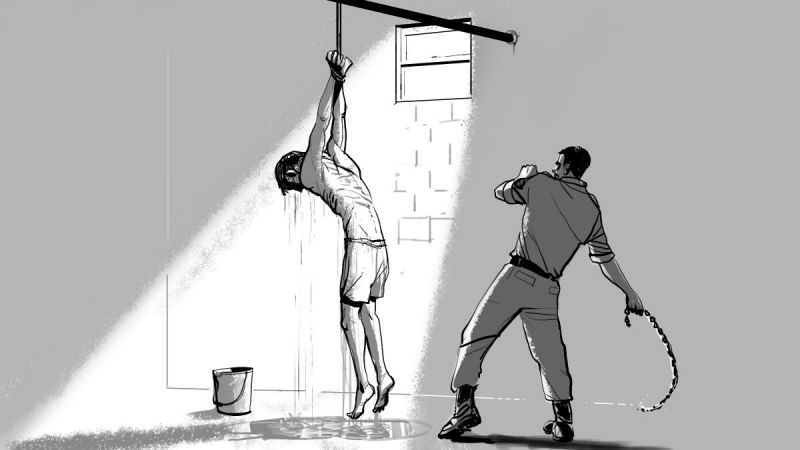Shocking Methods of Torture Practiced against Prisoners of Conscience in Saudi Arabia

Last November, Amnesty International issued a report stated that the activists detained in Saudi prisons were subjected to various forms of torture and psychological abuse, including isolation in narrow cells.
Recently, news were circulated by the detainees who were released and the families of the detainees who faced violations in Saudi prisons, that political prisoners are detained in solitary confinement in a 2.5 x 2.5 meter cell, including a toilet, place for eating and sleeping all in one place without partitions.
Many human rights organizations, including ALQST for Human Rights, Together for Justice and others considered the solitary confinement as the most brutal means of revenge against detainees in Saudi Arabia for vague and fabricated crimes they did not commit.
Almost 2,613 are detained in the prisons of Saudi Arabia according to Prisoners of Conscience twitter account, while other human rights defenders stated that this number is only for those arrested in the September arrest campaign in 2017. Meanwhile there is a complete official blackout on the real number of detainees in Saudi.
Methods of Torture
Human rights organizations published testimonies of some of those released on the methods of torture -other than solitary confinement- practiced against the detainees, including:
Beating and lashing the detainee: The torturers are accused of insulting the detainee through hitting, slapping and kicking with hands as well as with sticks and whips, the worst of which is hitting with a stick full of nails sticking to the outside.

Electrocution: by placing electric wires on the detainee’s body connected to a source of strong electricity, causing him pain and burns, until the detainee falls unconscious.
Hanging: Tying the hands and feet of the detainee, and hanging him up by the hands or upside down (that is, suspended by the feet) for long hours, and throwing ice water or dirt on him.
Undressing: The detainees are forced to take off their clothes under threats, shouting and insults in front of each other in a degrading way.
Sleep deprivation: Detainees are placed in cells close to torture rooms to hear the continuous screams of those being tortured, thus preventing them from sleeping. They also place a moving lighting or play strong sounds to prevent them from sleep for consecutive days.
Delusion of Drowning: The detainee’s head is submerged in the water until he is close to suffocation, then it is violently removed. This method is repeated until the detainee loses consciousness.
Burning with cigarettes: they burn different sensitive parts of the detainee’s body with cigarettes, leaving permanent marks.
Deliberate health negligence: whereby the detainee does not receive drugs or painkillers, and he is not allowed to be examined by the prison doctor.
Nails pulling: where forceful pliers are used to pull off the detainees’ nails, then he is hit on them after removing them to cause the worst pain.
Forced hugging and kissing: Amnesty International quoted its sources as saying that some prisoners were subjected to sexual harassment, hugging and forcible kissing by masked jailers.
All these torture methods are used against political, human rights and academic detainees in order to force them to confess to fabricate charges they did not commit.




